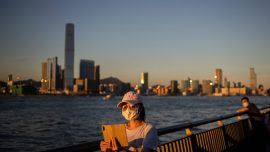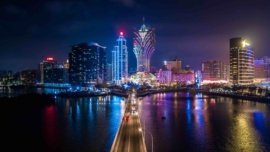About one year ago, residents from the northern neighbourhoods of Macau demonstrated in the streets of Macau. Their subject was the route followed by the light rail leaving from the area around the Border Gate in the direction of the city centre (more or less). A consultation period was underway. They were invited to vote for a favourite path, among three alternatives. The demonstrators claimed that only the external alternative, one running along the coastline, should be considered. Other alternatives, they said, would impact negatively on their lives and, in one case, would lead to the loss of local public amenities. Just a few days ago, the government made public the results of that consultation. As a rule, one can question how these consultations are designed. The population is asked to choose between alternatives, the rationale of which is not fully explained and where impacts are insufficiently described or quantified. This one does not seem to be a noticeable exception but, leaving that aside, what did the residents say? The external route was the favourite. That is, the one that involves longer times to be reached, the one that is farther from the residential nucleus. The preference, therefore, has an implicit message. Do it, if you really have to, for whatever reason: but do it as far away from our homes as possible. If the metro and its trail addressed the actual concerns of the local residents and their main transportation needs, they would certainly welcome a more centrally located access point. That is not the case, their voting neatly suggests. Are the residents being irrational? (Let us ignore, also, the promise made by the previous Secretary for Public Works, who guaranteed the light rail would have zero impact on the local residents. Taken at face value, that statement would be the best argument that could be made for not doing it at all!) Building the elevated rail in that densely populated area never looked like a good idea to start with. It does not seem to address the major transportation needs of the local residents or help to limit in any significant way the traffic stresses in that part of the city. It may look very modern (look, we have a sky train!), allow the administration to spread a lot of money around (without much control, as we know by now), but it does not seem to solve any major and unavoidable growth constraint, impact positively the neighbourhood economy or eliminate overall obstacles to physical flows in the city. This and most facts and events associated with the light rail suggest that, if reason were to prevail, the project would be shelved, at least on the Peninsula, while other less disruptive and more adequate solutions were sought. Past administration behaviour and statements provide little support, however, for such hope.
Top Stories
RELATED ARTICLESMORE FROM AUTHOR
【法律解碼】評估澳門《信託法》的進展:是否不負眾望?
第15/2022號法律(澳門《信託法》)於2022年12月1日正式生效。澳門自此成為葡語系首個設立在岸信託法的司法轄區,亦是繼《中華人民共和國信託法》、“台灣地區信託法”及《受託人條例(香港法例第29 章)》後,大中華地區第四部信託法。儘管澳門《信託法》至今已生效逾一年,但據了解,該法尚未得到有效實施,。因此有必要就當前的挑戰和未來的出路展開探討。
OPINION – Investing in Diversification!
As the lights of the Great Hall of the People in Beijing, where the “Two...























